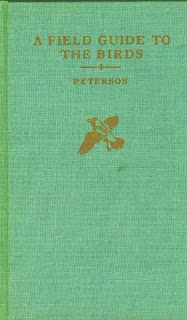It is the green, fabric-bound book embossed with a tiny Bobolink that sits on the shelves of teachers, hikers, sailors, and farmers across the country, the foundation of bird watching as we know it today, Roger Tory Peterson’s A Field Guide to the Birds.
First published in 1934, this book became the benchmark for all subsequent field guides to the birds of North America. Though not the first book to illustrate common birds of the east, Peterson’s guide was the first to systematically, almost typographically, present birds on the page. While earlier illustrators portrayed awkward, twisting scenes Peterson took the bird out of their natural context and laid them plain on the page, with thin lines denoting important field marks, changing the way we perceive birds in the field to this day.
First published in 1934, this book became the benchmark for all subsequent field guides to the birds of North America. Though not the first book to illustrate common birds of the east, Peterson’s guide was the first to systematically, almost typographically, present birds on the page. While earlier illustrators portrayed awkward, twisting scenes Peterson took the bird out of their natural context and laid them plain on the page, with thin lines denoting important field marks, changing the way we perceive birds in the field to this day.
 |
| Peterson's warblers |



No comments:
Post a Comment